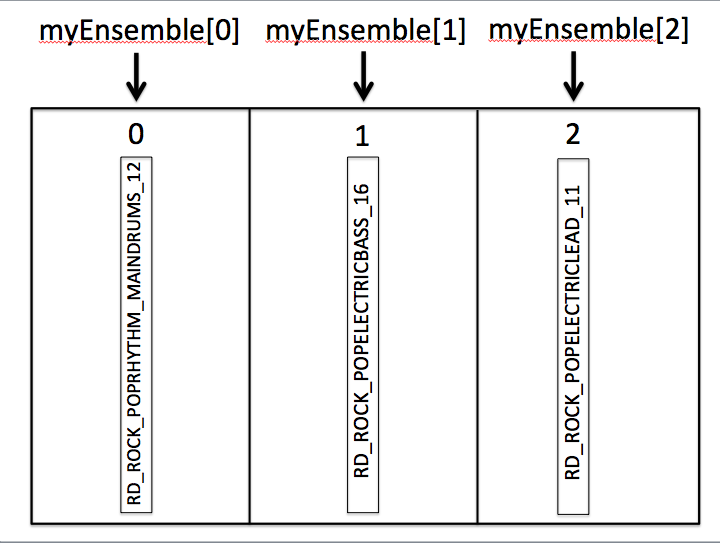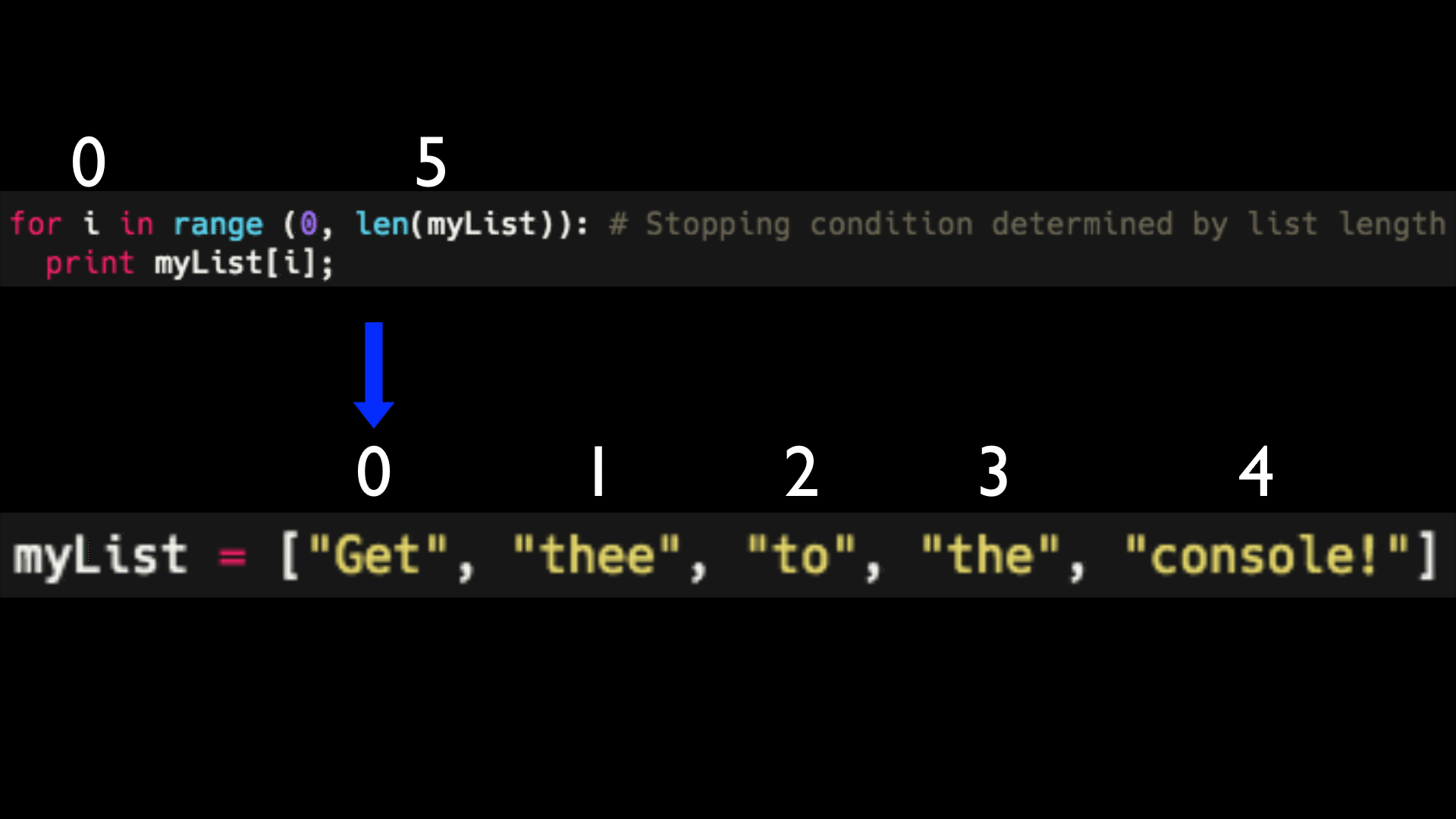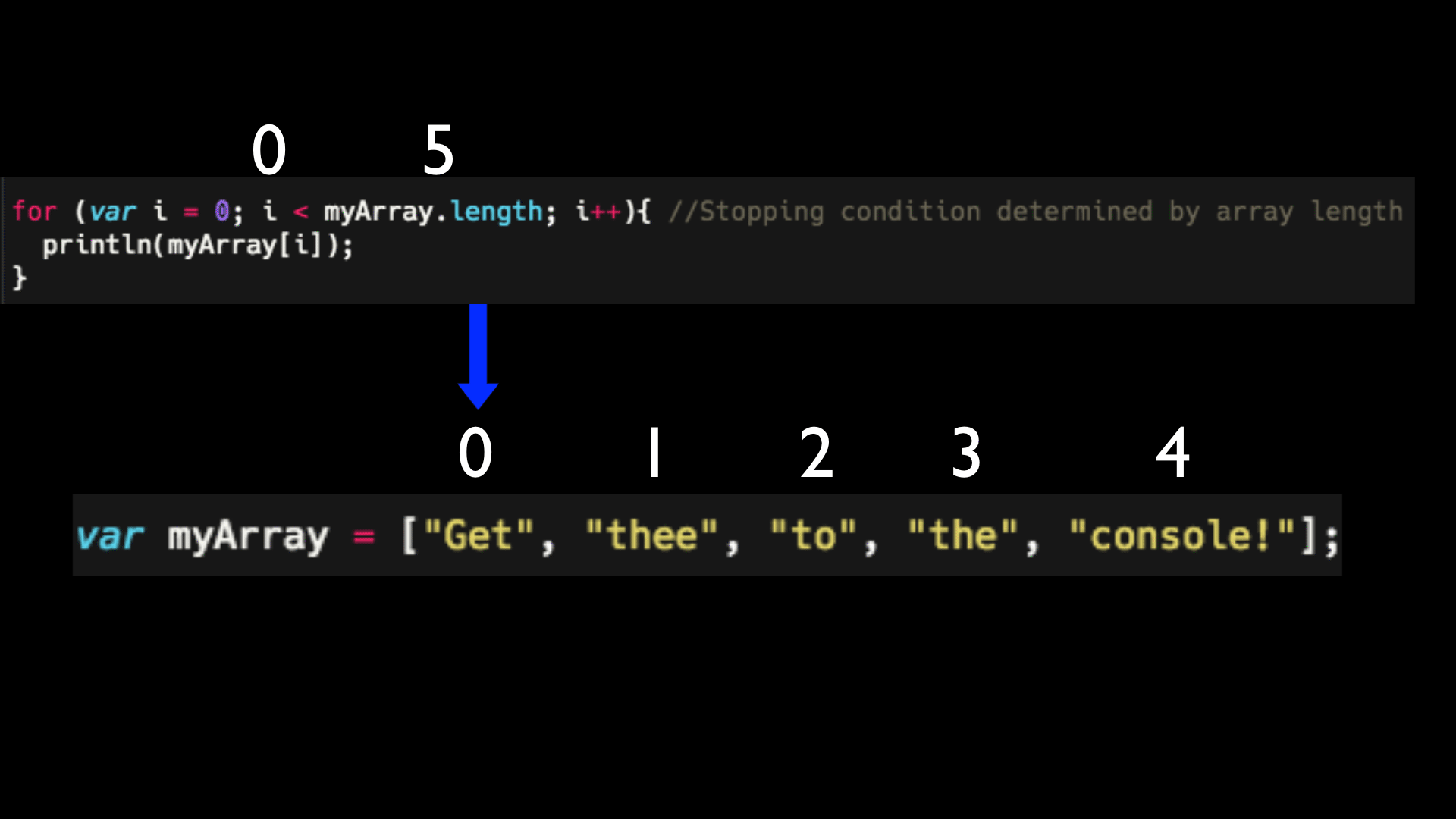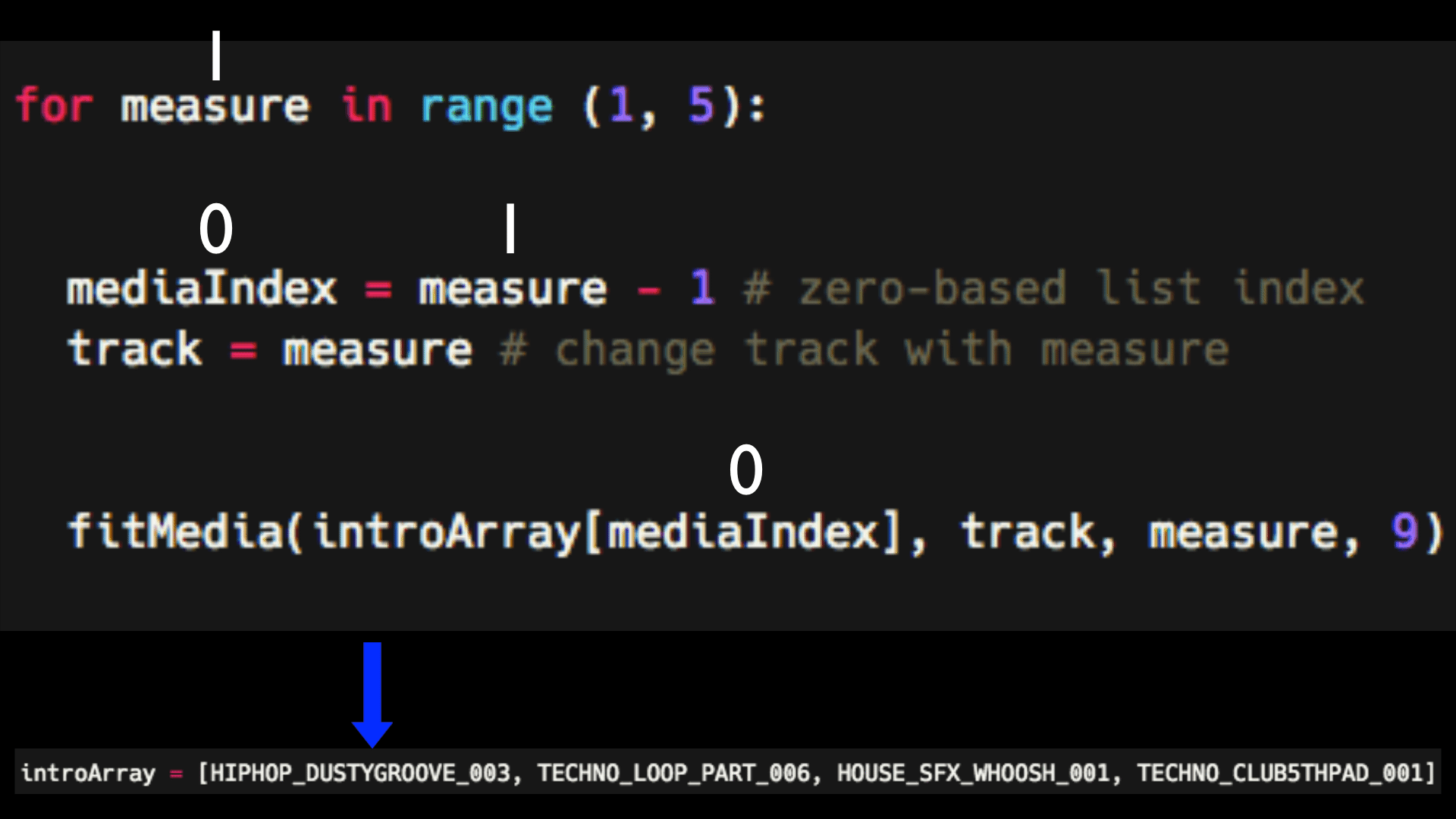Data Structures
This chapter focuses on lists, also called arrays in some programming languages. Lists are a structure for efficiently storing data in EarSketch, especially audio clips. In addition, new functionality of makeBeat() is covered.
This chapter focuses on arrays, also called lists in some programming languages. Arrays are a structure for efficiently storing data in EarSketch, especially audio clips. In addition, new functionality of makeBeat() is covered.
Data Structure Basics
A list is a collection of values combined into a single entity. They enable a single variable to store multiple items that can be easily retrieved. These items, referred to as list elements, can be any data type. We have seen lists created by the range() function previously. Now, we focus on manually created lists, using brackets ([]).
An array is a collection of values combined into a single entity. They enable a single variable to store multiple items that can be easily retrieved. These items, referred to as array elements, can be any data type. Manually created arrays are made using brackets ([]).
Elements stored in a list get assigned an index, just like the characters of a string. Refer to Chapter 13 for a detailed explanation of indices. List indices start at 0 and end at length - 1. The len() function can be used to obtain the length of a list. Individual elements of a list can be accessed by using square bracket notation ([]) along with an index. This same notation can be used to modify any list element.
Elements stored in an array get assigned an index, just like the characters of a string. Refer to Chapter 13 for a detailed explanation of indices. Array indices start at 0 and end at length-1. The length field can be used to obtain the length of an array, like myArray.length. Individual elements of an array can be accessed by using square bracket notation ([]) along with an index. This same notation can be used to modify any array element.
The following example shows how to store items as list elements and retrieve them with bracket notation. A list containing sound clips is initialized. Then, these elements are retrieved in a series of fitMedia() calls.
The following example shows how to store items as array elements and retrieve them with bracket notation. An array containing sound clips is initialized. Then, these elements are retrieved in a series of fitMedia() calls.
# Lists: Using a list to hold several audio clips
# Setup
from earsketch import *
setTempo(130)
# Music
# create a list of clips
myEnsemble = [RD_ROCK_POPRHYTHM_MAINDRUMS_12, RD_ROCK_POPELECTRICBASS_16, RD_ROCK_POPELECTRICLEAD_11]
fitMedia(myEnsemble[0], 1, 1, 5) # accessing index 0
fitMedia(myEnsemble[1], 2, 1, 5) # accessing index 1
fitMedia(myEnsemble[2], 3, 1, 5) # accessing index 2// Arrays: Using an array to hold several audio clips
// Setup
setTempo(130);
// Music
// create an array of clips
var myEnsemble = [RD_ROCK_POPRHYTHM_MAINDRUMS_12, RD_ROCK_POPELECTRICBASS_16, RD_ROCK_POPELECTRICLEAD_11];
fitMedia(myEnsemble[0], 1, 1, 5); // accessing index 0
fitMedia(myEnsemble[1], 2, 1, 5); // accessing index 1
fitMedia(myEnsemble[2], 3, 1, 5); // accessing index 2
Iterating Through a Data Structure
For-loops are a convenient way to read through a list from first to last index. The loop in the following example reads through myList and prints each string element in order. The len() function is used to determine how many loops are needed to iterate through the whole list.
For-loops are a convenient way to read through an array from first to last index. The loop in the following example reads through myArray and prints each string element in order. The length method is used to determine how many loops are needed to iterate through the whole array.
# List Iteration: Printing list elements with a loop
# Setup
from earsketch import *
setTempo(120)
# Body
myList = ["Get", "thee", "to", "the", "console!"]
# Stopping condition determined by list length
for i in range(0, len(myList)):
print(myList[i])// Array Iteration: Printing array elements with a loop
// Setup
setTempo(120);
// Body
var myArray = ["Get", "thee", "to", "the", "console!"];
// Stopping condition determined by array length
for (var i = 0; i < myArray.length; i++) {
println(myArray[i]);
}

The next example shows how to create an additive introduction in EarSketch in which instruments (tracks) are added to the music one by one. This is commonly used for a song’s introduction. Check out Kanye West’s "Power", a great example of this structure. The track and mediaIndex variables are related to measure through variable assignment, allowing them to be iterated on each loop. Remember, indices are 0 based, so mediaIndex must be measure - 1.
# Layering: Creating an additive introduction with array iteration
# Setup
from earsketch import *
setTempo(120)
# Music
introArray = [HIPHOP_DUSTYGROOVE_003, TECHNO_LOOP_PART_006, HOUSE_SFX_WHOOSH_001, TECHNO_CLUB5THPAD_001]
for measure in range(1, 5):
mediaIndex = measure - 1 # zero-based list index
track = measure # change track with measure
fitMedia(introArray[mediaIndex], track, measure, 9)// Layering: Creating an additive introduction with array iteration
// Setup
setTempo(120);
// Music
var introArray = [HIPHOP_DUSTYGROOVE_003, TECHNO_LOOP_PART_006, HOUSE_SFX_WHOOSH_001, TECHNO_CLUB5THPAD_001];
for (var measure = 1; measure < 5; measure++) {
var mediaIndex = measure - 1; // zero-based array index
var track = measure; // change track with measure
fitMedia(introArray[mediaIndex], track, measure, 9);
}

Using Data Structures with makeBeat
makeBeat() has the ability to handle multiple clips at once, allowing a single function call to trigger multiple samples. Passing in a beat string containing numbers 0 through 9 points makeBeat() to the list index of the corresponding sample. All clips must be stored in the same list to use this functionality. Check out the example below to see makeBeat() in action.
makeBeat() has the ability to handle multiple clips at once, allowing a single function call to trigger multiple samples. Passing in a beat string containing numbers 0 through 9 points makeBeat() to the array index of the corresponding sample. All clips must be stored in the same array to use this functionality. Check out the example below to see makeBeat() in action.
# Making a Drum Set: Using a list with makeBeat()
# Setup
from earsketch import *
setTempo(100)
# Music
# a list of drum clips
drums = [
ELECTRO_DRUM_MAIN_BEAT_001,
ELECTRO_DRUM_MAIN_BEAT_002,
ELECTRO_DRUM_MAIN_BEAT_003,
ELECTRO_DRUM_MAIN_BEAT_004
]
# each number is actually an index into the drums list
drumPattern = "0+0+11112+2+3+++"
makeBeat(drums, 1, 1, drumPattern)// Making a Drum Set: Using an array with makeBeat()
// Setup
setTempo(100);
// Music
// an array of drum clips
var drums = [
ELECTRO_DRUM_MAIN_BEAT_001,
ELECTRO_DRUM_MAIN_BEAT_002,
ELECTRO_DRUM_MAIN_BEAT_003,
ELECTRO_DRUM_MAIN_BEAT_004,
];
// each number is actually an index into the drums array
var drumPattern = "0+0+11112+2+3+++";
makeBeat(drums, 1, 1, drumPattern);Chapter 18 Summary
-
A list is a collection of values combined into a single entity, an efficient way to store data. Items stored within a list, or elements, can be any data type.
-
Like strings, list elements get assigned an index. List indices start at 0.
-
List elements are accessed with bracket notation, like myList[1].
-
makeBeat()can construct rhythms from multiple clips at once by passing in a beat string that refers to different list indices.makeBeat()can access clips in indices 0 through 9, provided they are stored in the same list.
-
A array is a collection of values combined into a single entity, an efficient way to store data. Items stored within a array, or elements, can be any data type.
-
Like strings, array elements get assigned an index. Array indices start at 0.
-
Array elements are accessed with bracket notation, like myArray[1].
-
makeBeat()can construct rhythms from multiple clips at once by passing in a beat string that refers to different arrays indices.makeBeat()can access clips in indices 0 through 9, provided they are stored in the same array.
Questions
What is the index number of the first element of a list in Python?
-
0 -
1 -
2 -
-1
What does len(myList) return?
-
The number of elements in
myList -
The data types of
myList -
The elements of
myList -
The width of
myList
What is the index number of the first element of an array in Javascript?
-
0 -
1 -
2 -
-1
What does myArray.length return?
-
The number of elements in
myArray -
The data types of
myArray -
The elements of
myArray -
The width of
myArray